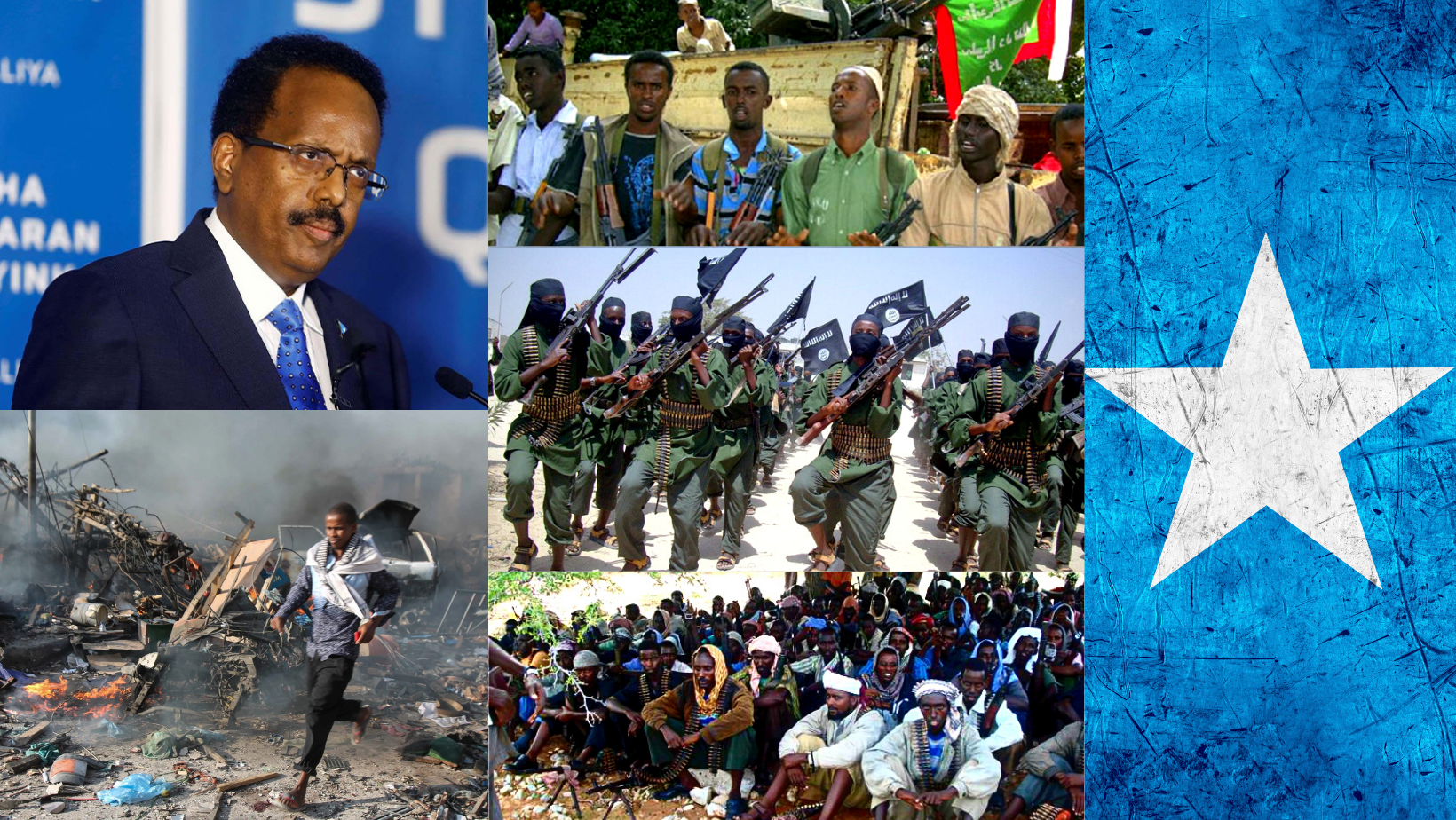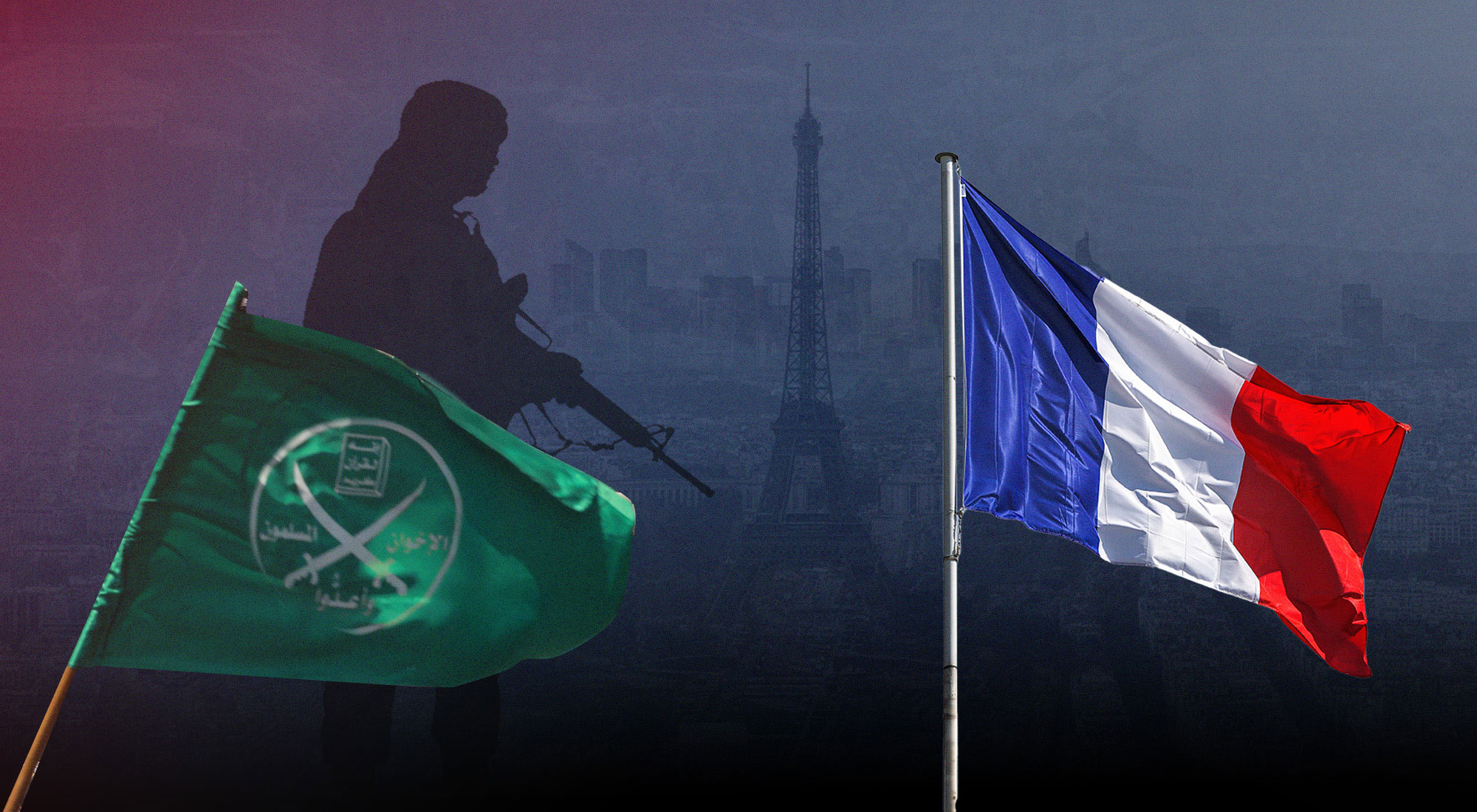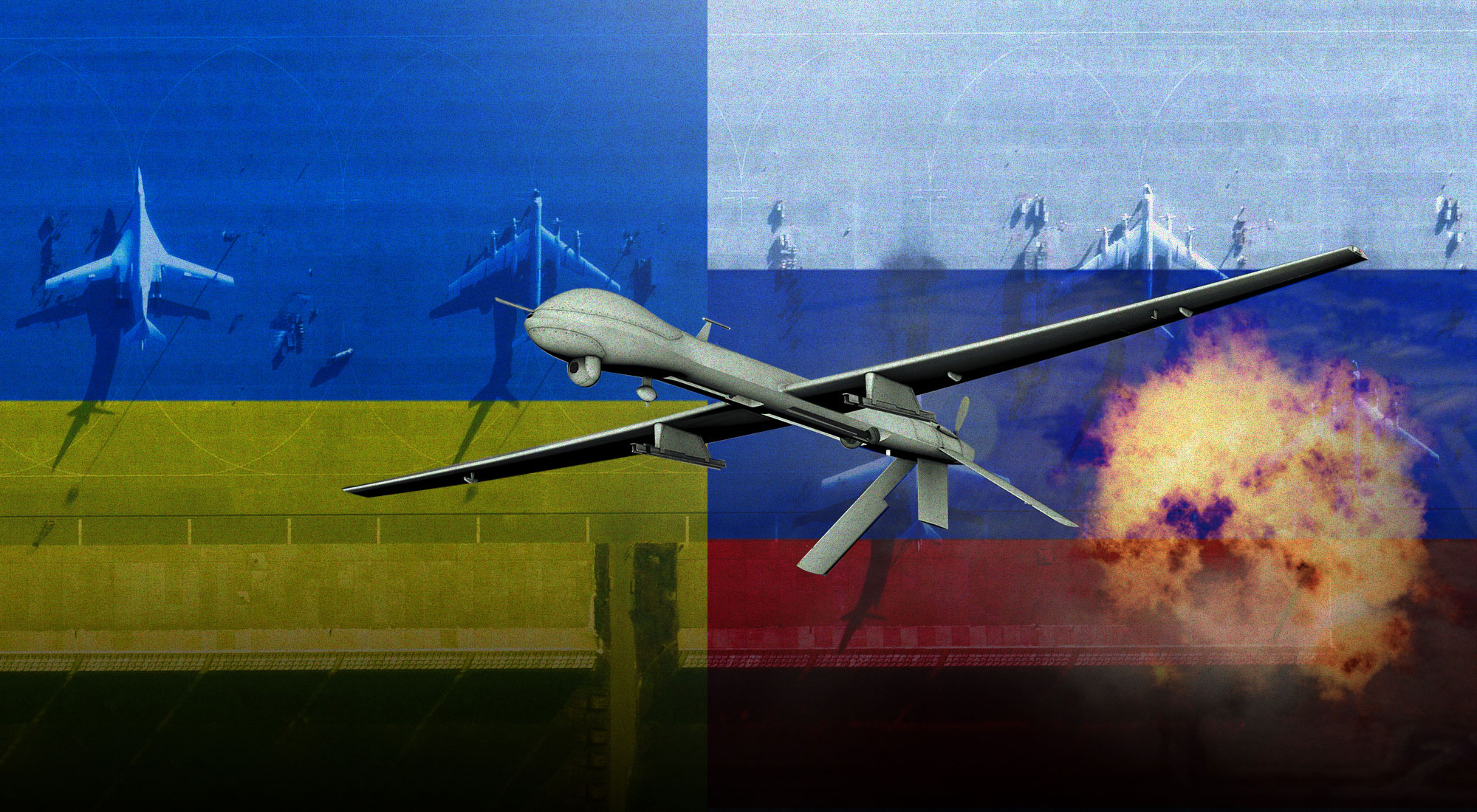Introduction
Somalia is again experiencing another season of acute political instability. First, the elected president since 2017, Mohamed Abdullahi Mohamed, popularly known as Farmaajo, refused to step down after failed attempts to hold elections in February 2021. Second, an ongoing struggle between Farmaajo and the Prime Minister, Mohamed Hussein Roble, has further polarized the country. Third, relations between the Federal Government of Somalia (FGS) and the UN-sanctioned and African Union-backed African Union Mission to Somalia (AMISOM) have worsened.
Al-Shabaab is the most prominent beneficiary of these rising tensions and the resulting security vacuum in Somalia. It is an al-Qaeda-affiliated terrorist group that has wreaked havoc across the country and in neighboring Kenya since 2006.[1] The group has regained control of many areas in the south and west of the country thanks to the weakness and disorganization of the Somali security apparatus as well as the confusion and disgruntlement within AMISOM, which was renamed the African Union Transitional Mission in Somalia (ATMIS) in 2022. Coupled with a decrease in American drone strikes and the withdrawal of U.S. forces from Somalia in late 2020, Somalia’s security is as deleterious as it has been since 1991 and the initial breakup of the country.[2]
Amidst this insecurity, an indigenous paramilitary group, Ahlu Sunna Wal Jama (ASWJ), has begun to counter al-Shabaab’s advance within Galmudug, a state in central Somalia. In chalking up its successes against al-Shabaab, ASWJ has fallen afoul of the FGS, which reportedly deployed Somali National Army units to retake areas liberated by ASWJ.[3] This intervention by forces sent from Somalia’s capital, Mogadishu, resulted in several clashes between the Somali military and ASWJ. First, this demonstrates the growing tensions that pit the FGS against the federal state of Galmudug and, correspondingly, ASWJ. Second, it showcases the tangled web of connections between elements of the FGS and al-Shabaab, some dating back decades.[4] Third, the antagonism of the FGS towards ASWJ highlights the clash within the Somali political space between more traditional forms of Somali Islam and the now-dominant forms of Salafi political Islam.
This analysis aims to analyze the import of ASWJ, providing a primer on the group’s origins, ideology, and modus operandi in the process. It will contextualize these within the current political and security vacuum in Somalia, where moderate Sufi militants now face off against both the FGS and al-Shabaab. The results of this struggle in Galmadug may determine nothing less than the political future of Somalia.
ASWJ: Genesis and modus operandi
ASWJ is a Sufi political and militant organization founded in 1991, as Somalia disintegrated following the fall of Somali President Siad Barre’s regime. Lawlessness and widespread violence followed and resulted in Somalia becoming, for many, the quintessential failed State.[5] In this context and coming on the heels of the highly successful importation of Salafism to Somalia during the 1970s and 1980s, traditional Somalia Sufi communities suffered. They were exposed to abuses and forced conversions perpetrated by various militant groups operating across the country. The nascent Salafi groupings, often drawn along Somali clan lines, spouted a more orthodox, non-syncretic and, at times, dogmatic form of Islam that resembled Saudi Arabia’s violent Islamist sects, such as Juhayman al-Otaybi’s Muslim Brotherhood, more than Somalia’s more traditional forms of Sunni Islam. The latter favored Ash’ariyah theology, Shafi’i jurisprudence, and Sufism replete with mysticism and pacifism.[6]
By the mid-1990s, increasingly puritanical forms of Sunnism, including forms of Muwahhidism and Salafism, had become dominant in Somalia, and were often informed by the chauvinistic modus operandi of a number of violent paramilitary groups. One of the most active, Al Ittihad Al Islamiya (AIAI), promoted a radical brand of Sunni Islam and was reportedly connected to al-Qaeda operatives, who carried out the 1998 United States embassy bombings in Nairobi and Dar es Salaam that killed 224 people.[7]
ASWJ was established with the explicit purpose of protecting Sufi communities from the depredation of AIAI and other affiliates. That ASWJ was singled out for attacks by groups like AIAI stemmed, in part, from their indigenous Somali religious ideology, a form of Sufism based on the teachings and orthopraxis of three African Sufi lodges or tariqats: Qadiriyya, Salihiyya, and Ahmadiyya.[8] At its birth, the group possessed no political agenda. Rather, it aimed to halt the violence perpetrated against fellow Sufis in certain Somali regions such as Galmadug and, in doing so, counter the spread of radical brands of Salafism within the country.[9] Specifically, the ASWJ sought to counteract the adoption of orthodox curricula within the Quranic schools dotting central Somalia.
From the organizational point of view, ASWJ shows similarities in structures to organizational networks and leadership like those established in Yemen by the predominately Zaidi Shia group, the Houthi. While ASWJ (as a Sunni group) shares neither the Houthi’s religious ideology nor its dogmatism, it does, like the Houthi, inhabit a relatively well-defined geographical area.[10] That is, ASWJ is rooted in parts of central Somalia, largely found in Galmadug federal state. This is a diverse region housing multiple distinct clans: Habar Gedir (Sa’ad, Suruur, Suleiman, Ayr, Dudubleh), Shiiqaal, Marehan, Murusade, Abgaal and Dir. ASWJ draws support from all of them.[11]
The group’s activities were initially based on their reading of a distinct Somali mélange of Sufi Islam and, subsequently, on a type of defensive activism using force. The transition between the two phases came about as a result of the Ethiopian military intervention that began in 2006. Until that time, ASWJ had reportedly repudiated militancy and the use of violence except in extreme cases involving their own survival. While the Ethiopian invasion put an end to the brief rule of the Islamic Courts Union (ICU), which had brought order to the streets of Mogadishu for the first time in over a decade, it resulted in two contingencies. The first was a power vacuum that encompassed not just Mogadishu but several other Somali regions, to include Galmadug. The second was the formation of al-Shabaab by ICU militants (as opposed to more moderate elements), which began to fill the vacuum, with a series of brutal abuses being committed in the process.[12] Al-Shabaab espoused a form of “purist militant Islam of Salafism.”[13] These targeted Sufi clerics, Sufi meeting places, and the desecration of tombs and shrines. As a result, ASWJ was forced to change its approach by legitimizing the use of violence against al-Shabaab. The Sufi group, accordingly, organized its defenses and began to administer areas lacking any governmental authority, including areas within Galmudug.[14]
ASWJ-administered and protected areas became bastions of resistance to al-Shabaab. In the process, its efforts to counter al-Shabaab brought the group to the attention of the two most powerful external state protagonists involved in Somalia at the time: Ethiopia and the United States. Between 2008 and 2009, ASWJ received financial support from both countries and began acting as an auxiliary force alongside Ethiopian troops operating in central Somalia.[15] Thanks to on-the-ground knowledge and battlefield experience, as well as Ethiopian and American assistance, the Sufi paramilitaries chalked up several more successes and, from 2009, ASWJ administered a significant number of districts that had been liberated from al-Shabaab.
Because of its capabilities in counterterrorism and administrative management, ASWJ was deemed as a dangerous alternative to the ongoing, highly intricate efforts of the international community aimed at rebuilding a semblance of the Somali state. As such, the perceptions of external stakeholders such as the U.S. shifted, and ASWJ found it could no longer count on Washington’s support. In 2010, for instance, under pressure from both Addis Ababa and Washington, the group began to cooperate with the newly formed Transitional Federal Government (TFG) in Mogadishu, the predecessor to the current FGS. The partnership envisaged a form of coordinated activity against al-Shabaab in exchange for seats for ASWJ representatives within the governmental and administrative cadres of the developing FGS. Relations between the group and TFG authorities were, however, anything but idyllic. This stemmed partly from ASWJ’s desire to maintain its sovereignty of action as well as autonomy within Galmudug. This had precedent on account of the years during which the Sufi group’s paramilitary/security and administrative structures had run parallel to those of the federal state of Galmudug. ASWJ also reportedly enjoyed a great deal of legitimacy among local communities from which most of its members and officials came – unlike the federal state authorities. In addition, the group’s effectiveness in providing security to the region and its ability to supply basic services fostered cross-clan ties. This successful implementation of initiatives was made possible by the political skills of the group’s leadership and, more specifically, Mohamed Ali Hassan (Somali: Maxamad Cali Xasan; also, Sheikh Mohamed Shakir Ali Hassan), the group’s chief since 2015. Moallim Mohamud Sheikh, the ASWJ’s spiritual leader, occupies an equally prominent role in ASWJ. Over the years, the two have exploited resources from the war on terror to build and then consolidate a power base in Galmudug State.[16]
ASWJ: Between the FGS and al-Shabaab
The FGS, which succeeded the TFG in 2012, began to promote a power-sharing agreement between ASWJ and the Galmudug state authorities. This took on new urgency with the rise to power of Farmaajo in 2017, in an election characterized by corruption and foreign state interventions.[17] Spearheaded by Farmaajo and his administration, the FGS aimed to end the dualism created between government (both federal and state) institutions and informal partners such as ASWJ. This was part of a larger aim on the part of Farmaajo and the FGS to claw back the power the central government in Mogadishu had lost back in 1991.[18] As part of the agreements, some members of the Sufi group, including Mohamed Ali Hassan, joined the government and administrative structures of the federal state of Galmadug. In 2019, as another step in the assimilation process, the FGS promoted a plan to integrate ASWJ militias into the multiplicity of government-linked official and semi-official security forces, to include the Somali National Army (SNA). The ASWJ’s cooperation with the FGS began to crack in 2020, when Mogadishu meddled in Galmudug state’s presidential elections. Mohamed Ali Hassan, one of the candidates, openly denounced Farmaajo and the FGS’s attempted interference. The resulting tit-for-tat accusations and insults on social media resulted in low-intensity riots in Dhusamareb, the capital of Galmudug. ASWJ’s leadership chose to quell tempers by instructing the group’s paramilitary forces to withdraw from the city. Simultaneously, Mohamed Ali Hassan and other group members left their state government roles.
At the root of the dispute was politics, to include well-known issues such as President Farmaajo’s desire to create a network of personal ties with the different federal states to increase his power over the country and the various clans. Besides the political dimension, the clash was characterized by an ideological factor that is less well known – at least outside Somalia. In a veiled way, the outlines of the competing visions and methods of syncretic Sufism indigenous to Somalia, and the largely imported militant and dogmatic forms of Salafism have emerged. To wit, Farmaajo, in his efforts to centralize authority and maintain his own power, has progressively staffed FGS positions with members sympathetic to more radical forms of Sunni Islam. In this he has called on the services and support of former ICU members, some of whom reportedly have ties to al-Shabaab. The most prominent of these is the current head of the National Intelligence and Security Agency (NISA), Fahad Yasin Haji Dahir. A former member of AIAI, he has become one of the most powerful men in Somalia. Having initially fled to Qatar after the ICU’s fall from power, Fahad Yasin became an Al-Jazeera journalist for a time, eventually playing a leading role in Qatar’s attempts to gain political influence in Somalia. He acted, for example, as Doha’s middleman in Somalia’s presidential elections by funneling Qatari funds that helped Hassan Sheikh Mohamud and later Farmaajo win the vote in 2012 and 2017, respectively.[19] Fahad Yasin was appointed to a succession of powerful roles culminating in his position at NISA in 2019.
Despite losing his position at NISA on account of the political fratricide between Farmaajo and his prime minister, Farmaajo has attempted to maneuver him into parliament to grant him immunity. In this Fahad Yasin has many supporters among former ICU and AIAI affiliates. His influence in the FGS and his role in NISA have dovetailed with Farmaajo’s harsher line taken against the federal member states and their cherished autonomy, as well as the aforementioned uptick in al-Shabaab’s violence and territorial reclamation. These developments have, in turn, persuaded ASWJ to rally. As in the past, ASWJ has resumed a series of activities parallel to the state institutions. In the summer of 2021, for instance, al-Shabaab re-occupied the town of Amara, in Galmudug, a place that had been liberated only weeks before by the SNA. The withdrawal of the SNA and other government affiliated security forces prompted ASWJ paramilitaries to intervene unilaterally. Within the space of a few weeks, the Sufi group took control of several cities in the heart of Somalia that were threatened by al-Shabaab, such as Guraceel and Mataban.
ASWJ’s armed initiative has temporarily halted al-Shabaab’s advance in Galmadug. The group’s fighting prowess, local support, and growing power have, however, generated new concerns in Mogadishu, and the FGS has deployed Somali special forces to Galmadug – not to fight against al-Shabaab, but against ASWJ. This has led to several violent clashes between elements of the SNA and the Sufi militias in Bohol, on the outskirts of Dhusamareb.
A focus on ASWJ and contextualizing the future of Somalia
ASWJ is unique in the Somali political space. More than the AIAI and al-Shabaab – and certainly more than the imported brand of governance fostered by the FGS – it is an entirely indigenous group that has attempted to prosecute solutions to fit Galmadug’s unique socio-economic and political contexts. Albeit its contributions have been small. They have had arguably positive impacts that, at least partially, have to do with their mobilization of sentiment and influence through traditional Somali Sufism. Indeed, the effectiveness of ASWJ as a fighting force is in large measure due to the belief of its combatants and supporters that their way is the legitimate one. For them, it is as much a matter of safeguarding their own indigenous, religious identity – and that of Somalia’s overall – as it is protecting themselves from the abuses and terror of al-Shabaab and other foreign-inspired and foreign-linked extremist groups. In this regard, ASWJ can be viewed as a kind of nationalist movement – or at least one with nationalist appeal.[20] This sets ASWJ apart from the largely imported, albeit heavily entrenched and dominant brands of Salafi Islam that – at the fringes and as seen in groups like al-Shabaab – foster militarism and chauvinism-inspired violence against perceived “others.”
The fact that both al-Shabaab and elements within the FGS bent on reestablishing a unitary Somali state are colluding to destroy ASWJ should not be downplayed. Aid organizations, think tanks and external state partners that largely fund the FGS have all called repeatedly for Somali solutions to Somali problems, i.e., the exact opposite of the western-inspired and -funded FGS with its emphasis on clannism and attempts at centralizing power. ASWJ, nevertheless, has been ostracized and demonized because it poses an alternative path and, thus, poses a threat to the FGS, the interests of many external state partners operating in Somalia, and the militant strains of Sunni Islam. ASWJ, perhaps more than anything else, represents a fading, albeit powerful image: the Somalia of the past, where a syncretic and more cohesive polity lived peacefully in a space that downplayed the negative aspects of clannism and fostered one of post-independent Africa’s finest success stories.[21]
What does the future hold for ASWJ? It continues to enjoy a power base in Galmadug, as well as the resources and capabilities it has accumulated over the years. Indeed, some locals have reportedly sided with the Sufi militiamen because they put much more trust in ASWJ than in the FGS authorities in Mogadishu or the federal state authorities in Dhusamareb. On top of this, al-Shabaab continues its predations in the region now that the gains made by ASWJ against the group were curtailed by the FGS. As such, ASWJ is biding its time, attempting to avoid outright confrontation with Mogadishu. This, after all, would have the perverse effect of weakening both ASWJ and favoring al-Shabaab. Yet, the group wants to send the message to Farmaajo and the ruling cadres in Mogadishu that governing central Somalia cannot be accomplished – at least peacefully – without the support of ASWJ and its supporters.
References
[1] See Ingiriis, M. H. (2018). From Al-Itihaad to Al-Shabaab: How the Ethiopian Intervention and the ‘War on Terror’ Exacerbated the Conflict in Somalia. Third World Quarterly, 39(11), 2033-2052. Also see Cannon, B. J., & Ruto Pkalya, D. (2019). Why Al-Shabaab Attacks Kenya: Questioning the Narrative Paradigm. Terrorism and Political Violence, 31(4), 836-852.
[2] For more on the role of drone strikes and U.S. support for the FGS, see Cannon, B. J. (2020). What’s in It for Us? Armed Drone Strikes and the Security of Somalia’s Federal Government. Small Wars & Insurgencies, 31(4), 773-800.
[3] Sheikh, A. (2021, October 2). Somali Militia, Former Government Ally, Captures Two Towns from Federal Forces. Reuters. https://www.reuters.com/world/africa/somali-militia-former-government-ally-captures-two-towns-federal-forces-2021-10-01/.
[4] Cannon, B. (2019). Foreign State Influence and Somalia’s 2017 Presidential Election: An Analysis. Bildhaan: An International Journal of Somali Studies, 18(1), 20-49: 31-33.
[5] See, for example, Kimenyi, M.S., Mbaku, J. M., Moyo, N. (2010). Reconstituting Africa’s Failed States: The Case of Somalia. Social Research: An International Quarterly, 77(4), 1339-1366; Marangio, R. (2012). The Somali Crisis: Failed State and International Interventions. IAI Working Paper, 12 (15), 1-15.
[6] Ingiriis, M. H. (2018). The Invention of Al-Shabaab in Somalia: Emulating the Anti-Colonial Dervishes’ Movement. African Affairs, 117(467), 217-237. See also Abdullahi, A. M. (2010). The Roots of the Islamic Conflict in Somalia. Hiraan. https://www.hiiraan.com/comments2-op-2010-jun the_roots_of_the_islamic_conflict_in_somalia.aspx.
[7] Woldemichael, W. (2006). International Terrorism in East Africa: The Case of Kenya1. Ethiopian Journal of the Social Sciences and Humanities, 4(1), 33-53: 34.
[8] Ingiriis, M.H. (2020, June 16). Ahlu-Sunna Wal Jameeca and the Political Marketplace in Somalia. LSE Conflict Research Programme. https://blogs.lse.ac.uk/crp/2020/06/16/ahlu-sunna-and-the-political-marketplace-somalia/.
[9] It should be noted that Salafism within Somalia, as in other predominantly Sunni Muslim states, is by no means monolithic. For an understanding of Salafism in Somalia see, for example, Marchal, R., & Sheikh, Z. M. (2015). Salafism in Somalia: Coping with Coercion, Civil War and Its Own Contradictions. Islamic Africa, 6(1-2), 135-163.
[10] Di Domenicantonio, G. (2015-16). “With God on Our Side”: A Focus on Ahlu Sunna Waljama’a, a Sufi Somali Paramilitary Group. The Annual Review of Islam in Africa. 12/13, 64-69.
[11] Author interview with a Somalia-based individual, March 29, 2022.
[12] Ngugi, M. W. (2013, October 4). How Al-Shabaab Was Born. The Guardian. https://www.theguardian.com/world/2013/oct/04/kenya-westgate-mall-attacks.
[13] Ingiriis, M. H. (2018). The Invention of Al-Shabaab in Somalia: Emulating the Anti-Colonial Dervishes’ Movement. African Affairs, 117(467), 217-237.
[14] Galmadug was established as a federal member state of Somalia in 2006.
[15] Ingiriis, M.H. (2020, June 16). Ahlu-Sunna Wal Jameeca and the Political Marketplace in Somalia. LSE Conflict Research Programme. https://blogs.lse.ac.uk/crp/2020/06/16/ahlu-sunna-and-the-political-marketplace-somalia/.
[16] Ingiriis, M. H. (2020). Ahlu-Sunna Wal Jameeca and the Political Marketplace in Somalia. LSE Blogs. https://blogs.lse.ac.uk/crp/2020/06/16/ahlu-sunna-and-the-political-marketplace-somalia/.
[17] Cannon, B. J. (2019). Foreign State Influence and Somalia’s 2017 Presidential Election: An Analysis. Bildhaan: An International Journal of Somali Studies, 18(1), 20-49.
[18] Čok, C. (2021, May 24). Why Is Somalia’s Political Crisis So Difficult to Solve? Fair Observers. https://www.fairobserver.com/region/africa/corrado-cok-somalia-political-crisis-farmajo-federal-elections-turkey-qatar-news-12182/.
[19] For more on the 2017 election, see Cannon, B. (2019). Foreign State Influence and Somalia’s 2017 Presidential Election: An Analysis. Bildhaan: An International Journal of Somali Studies, 18(1), 20-49.
[20] Author interview with a Somalia-based individual, March 29, 2022.
[21] Samatar, A. I. (2016). Africa’s First Democrats: Somalia’s Aden A. Osman and Abdirazak H. Hussen. Indiana University Press.








